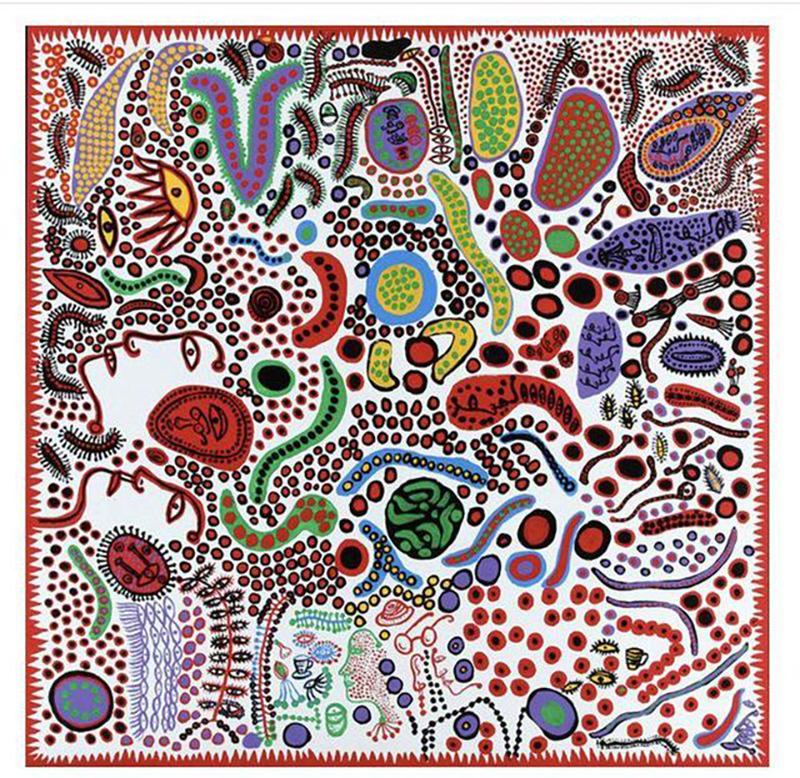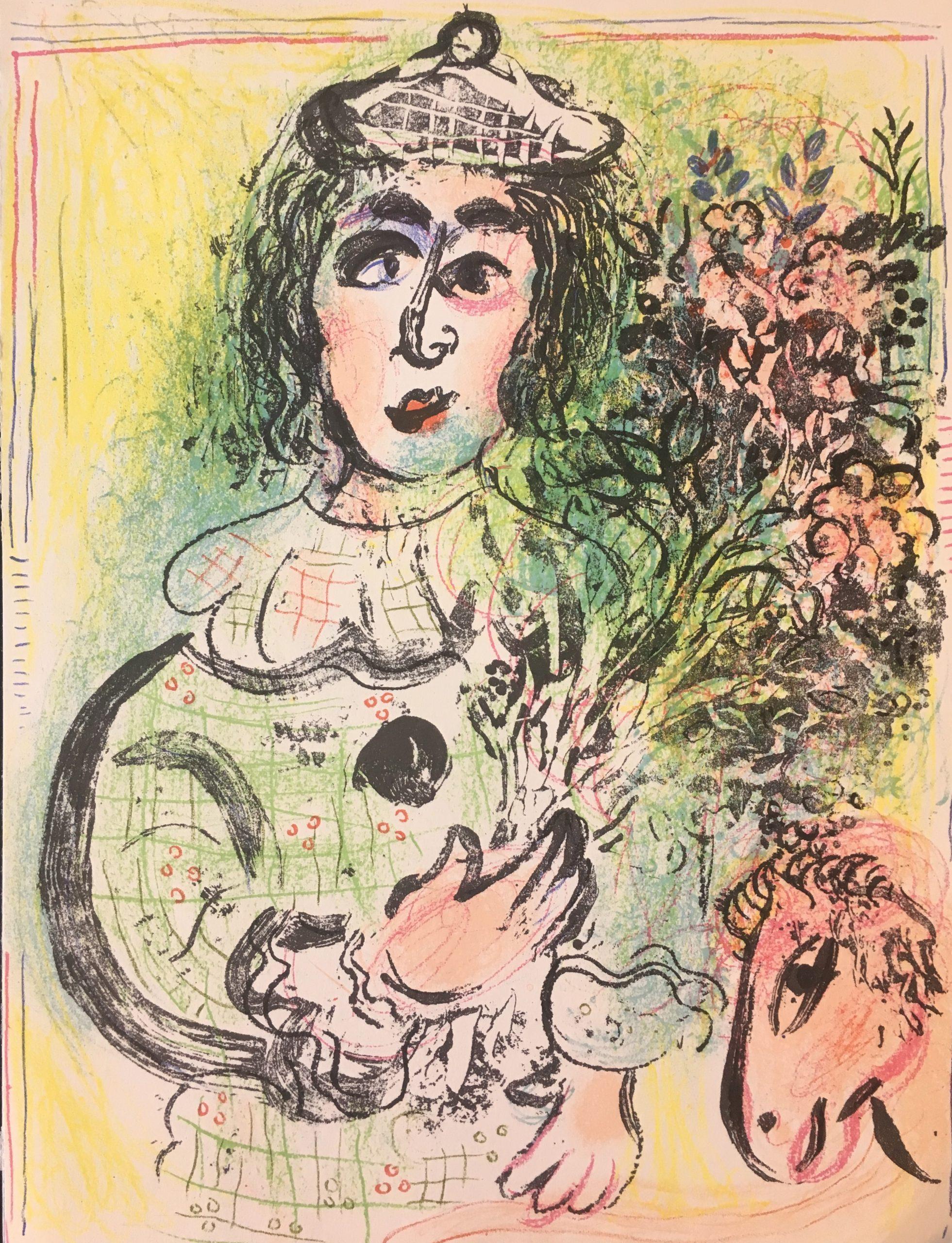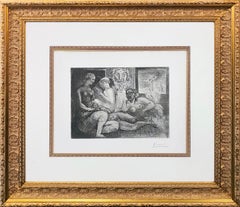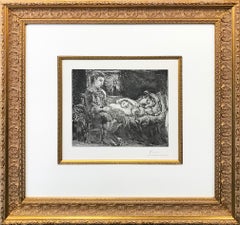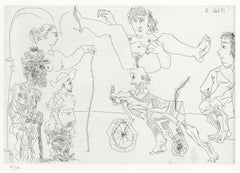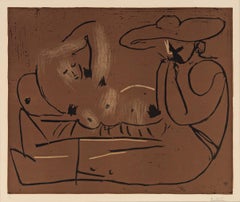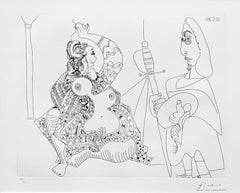Popular Artists
Notable Artists
Highly influential and instantly recognizable, these talents are the most popular on 1stDibs.
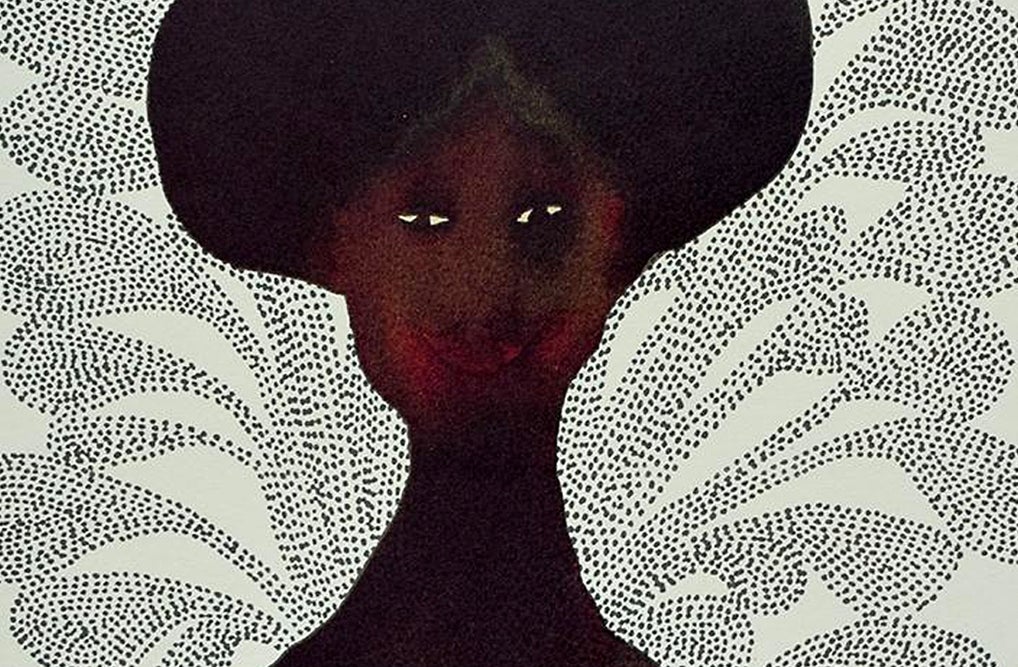
to
1
23
19
7
2
31
9
1
30
8
2
1
Overall Height
to
Overall Width
to
20
2
2
1
39
25
19
17
14
12
10
10
3
3
2
2
2
2
2
1
1
1
1
1
42
2
6
13
14
2
4
15
13
8
2
1
25
8
7
6
4
QUATRE FEMMES NUES ET TETE SCULPTEE (BLOCH 219)
By Pablo Picasso
Located in Aventura, FL
Plate 82 from La Suite Vollard. Bloch 219. Baer 424. Etching on Montval paper. Signed in pencil, from the edition of 260 (there was also an edition of 50 with larger margins). Number...
Category
1930s Cubist Popular Artists
Materials
Engraving, Paper
GARCON ET DORMEUSE A LA CHANDELLE (BLOCH 226)
By Pablo Picasso
Located in Aventura, FL
Plate 26 from La Suite Vollard. Bloch 226. Baer 440. Etching, engraving and aquatint, on Montval paper. Signed in pencil, from the edition of 260 (there was also an edition of 50 wit...
Category
1930s Cubist Popular Artists
Materials
Etching, Aquatint, Paper, Engraving
Plate V, Le Cocu Magnifique
By Pablo Picasso
Located in Fairlawn, OH
Plate V, Le Cocu Magnifique
Etching, 1968
Unsigned
From the unsigned edition of 200 impressions printed on Rives BFK paper
There is also a signed ed...
Category
1960s Modern Popular Artists
Materials
Etching
Femme Couchée et Homme au Grand Chapeau
By Pablo Picasso
Located in New York, NY
Large, attractive color linocut by Pablo Picasso from a limited edition of 50. Signed by Picasso and numbered in pencil. Printed by Arnéra, Vallaur...
Category
1950s Modern Popular Artists
Materials
Linocut
Reflexion du Peintre sur la Vie (Reflection of the Painter on Life)
By Pablo Picasso
Located in Laguna Beach, CA
Drypoint, 1967. 350x300 mm; 13 5/8x11 5/8 inches, full margins. With the artist's ink stamp signature, lower right, and numbered 38/50 in pencil, lower left. A very good impression. ...
Category
1960s Cubist Popular Artists
Materials
Drypoint
MOUSQUETAIRE ET ODALISQUE, MEDUSE, PLATE 47 FROM SERIES 156 (BLOCH 1902)
By Pablo Picasso
Located in Aventura, FL
Mousquetaire et Odalisque, méduse, plate 47 from Series 156. Bloch 1902; Baer 1908. Etching on wove paper. Stamped signature, hand numbered in pencil. Edition of 50. Published by G...
Category
1970s Cubist Popular Artists
Materials
Paper, Etching
Peintre barbu en robe de chambre, avec deux femmes nues et un visiteur
By Pablo Picasso
Located in Aventura, FL
Peintre barbu en robe de chambre, avec deux femmes nues et un visiteur, from « 347 Series » Aquatint on paper. Hand signed and numbered by the artist...
Category
1960s Cubist Popular Artists
Materials
Aquatint, Paper
HOMME NU ASSIS EN TAILLEUR (BLOCH 1600)
By Pablo Picasso
Located in Aventura, FL
Homme nu assis en Tailleur, Plate 121 from Series 347 (B. 1600; Ba. 1616). Etching on wove paper. Hand signed and numbered by the artist. Edition of 50. Ima...
Category
1960s Cubist Popular Artists
Materials
Etching, Paper
Tribute to Degas : Three Nudes - Original signed Etching - Limited to 50 copies
By Pablo Picasso
Located in Paris, FR
Pablo PICASSO
Tribute to Degas : Three Nudes
Original etching and aquatint
Signed with the artist stamp bottom right
Numbered in pencil 4/50
On vellum 36 x 45 cm (c. 14.5 x 18 inch)...
Category
1970s Cubist Popular Artists
Materials
Etching
347 SERIES (BLOCH 1502)
By Pablo Picasso
Located in Aventura, FL
Etching on paper. Hand signed and numbered by the artist. From the 347 series. Bloch 1502. Edition of 50. Sheet size: 18 x 22 inches. Image size 12.375 ...
Category
1960s Cubist Popular Artists
Materials
Etching, Paper
Le Voil, I
By Pablo Picasso
Located in Fairlawn, OH
Provenance:
Marina Picasso Estate, her number verso
Purchased from Jan Krugier Gallery, NY
References And Exhibitions:
Georges Bloch, Picasso: Catalogue de l'oeuvre grave et lith...
Category
1930s Popular Artists
Materials
Drypoint
Le Couple
By Pablo Picasso
Located in New York, NY
Pablo Picasso (1881-1973), Le Couple, 1951, drypoint on chine volant, signed lower right margin and numbered (5/XI) lower left margin. References: Bloch 690,...
Category
1950s Cubist Popular Artists
Materials
Drypoint
Le Trois Baigneuses II
By Pablo Picasso
Located in San Francisco, CA
Signed with the artist’s estate stamp signature in black ink in the margin lower right Picasso
A richly printed impression of Geiser’s only state printed with the plate corrosion ...
Category
20th Century Modern Popular Artists
SIX NUDES
By LeRoy Neiman
Located in Aventura, FL
Hand signed numbered by the artist. Artwork is in excellent condition. Certificate of Authenticity included. Edition of 250. All reasonable offers will be considered.
Category
1990s Impressionist Popular Artists
Materials
Paper, Etching
Alfons Mucha - Original Lithograph - Femmes Art Nouveau
By Alphonse Mucha
Located in Collonge Bellerive, Geneve, CH
Title: Decorative Documents
Author: Alfons Mucha.
Publisher: Paris: Librairie Centrale des Beaux-Arts, 13 Rue Lafayette. Emile Levy publisher. Published ...
Category
Early 1900s Art Nouveau Popular Artists
Materials
Lithograph
Alfons Mucha - Original Lithograph - Christmas Baby Party
By Alphonse Mucha
Located in Collonge Bellerive, Geneve, CH
Title: Decorative Documents
Author: Alfons Mucha.
Publisher: Paris: Librairie Centrale des Beaux-Arts, 13 Rue Lafayette. Emile Levy publisher. Published ...
Category
Early 1900s Art Nouveau Popular Artists
Materials
Lithograph
Dismemberment -- Print, Portrait, Woman, Nude, Feminist Art by Louise Bourgeois
By Louise Bourgeois
Located in London, GB
Dismemberment, 1994
Louise Bourgeois
Drypoint and roulette, on smooth Somerset wove paper
Signed and numbered from the edition of 44
Fourth and final state
Printed by Harlan & Weaver, New York
Published by Peter Blum Edition, New York
Plate: 17.6 × 12.6 cm (6.9 × 4.9 in)
Sheet: 52 × 37.7 cm (20.5 × 14.8 in)
Literature: MoMA Cat. No. 652/IV
"This is a self-portrait as a helpless, defenceless woman. She has no arms... she is like the harmless women in sculpture. The protecting hand has been cut off. Maybe women are just poor creatures... there is always the fear of being inadequate... of not being able to take care of oneself. It is a permanent feeling. There is the need to defend oneself... then she would be afraid for the children. I always felt that I could not defend myself because I could not understand what motivates people... I still feel that way."
In reference to the game of marbles (being played by the hand at bottom right, most easily seen in state IV), Bourgeois said: "There is always someone to trick her... someone always wins. This is the desperate art of self-defense.... But even if someone cut her, she would not lose her dignity... she would still stand there in full self-assurance. She tries to put herself back together through her beauty... through her hair. You can land on your feet if you are beautiful...
Category
1990s Feminist Popular Artists
Materials
Drypoint
Marilyn from the American Dream Portfolio by Robert Indiana
By Robert Indiana
Located in Long Island City, NY
Artist: Robert Indiana, American (1928 - )
Title: Marilyn from the American Dream Portfolio
Year: 1997
Medium: Serigraph, signed and numbered in pencil
Edition: 395
Image Size: 14 x ...
Category
1990s Pop Art Popular Artists
Materials
Screen
Jean Cocteau - Parametabolismes - Original Lithograph
By Jean Cocteau
Located in Collonge Bellerive, Geneve, CH
Jean Cocteau - Parametabolismes - Original Lithograph
Signed "Jean Cocteau" in the plate and dated 1956 in the plate.
39 x 29 cm
Edition: 500
Hand numbered
Stamp signed lower right
Category
1950s Modern Popular Artists
Materials
Lithograph
Jean Cocteau - Marine Mountains - Original Lithograph
By Jean Cocteau
Located in Collonge Bellerive, Geneve, CH
Jean Cocteau - Marine Mountains - Original Lithograph
Dimensions: 38 x 28 cm
Edition: 200
In Rives
From: COCTEAU. — VERDET (André). Montagnes marines. S. l. (Paris), Les Messagers du...
Category
1960s Modern Popular Artists
Materials
Lithograph
Jean Cocteau - Marine Mountains - Original Lithograph
By Jean Cocteau
Located in Collonge Bellerive, Geneve, CH
Jean Cocteau - Marine Mountains - Original Lithograph
Dimensions: 38 x 28 cm
Edition: 200
In Rives
From: COCTEAU. — VERDET (André). Montagnes marines. S. l. (Paris), Les Messagers du...
Category
1960s Modern Popular Artists
Materials
Lithograph
Jean Cocteau - Under the Fire Coat - Original Lithograph
By Jean Cocteau
Located in Collonge Bellerive, Geneve, CH
Jean Cocteau - Under the Fire Coat - Original Lithograph
Signed "Jean" in the plate and dated 1954 in the plate.
Joseph Forêt Editions
Dimensions: 41 x 33 cm...
Category
1950s Surrealist Popular Artists
Materials
Lithograph
Jean Cocteau - White Book - Original Handcolored Lithograph
By Jean Cocteau
Located in Collonge Bellerive, Geneve, CH
Jean Cocteau
White Book - Autobiography about Cocteau's discovery of his homosexuality. The book was first published anonymously and created a scandal.
Original Handcolored Lithograp...
Category
1930s Modern Popular Artists
Materials
Lithograph
Jean Cocteau - Europe's Agriculture - Original Lithograph
By Jean Cocteau
Located in Collonge Bellerive, Geneve, CH
Original Lithograph by Jean Cocteau
Title: Europe's Agriculture
Signed in the stone/printed signature
Dimensions: 33 x 46 cm
Luxury impression from the portfolio published by Sciaky....
Category
1960s Cubist Popular Artists
Materials
Lithograph
Jean Cocteau - White Book - Original Handcolored Lithograph
By Jean Cocteau
Located in Collonge Bellerive, Geneve, CH
Jean Cocteau
White Book - Autobiography about Cocteau's discovery of his homosexuality. The book was first published anonymously and created a scandal.
Original Handcolored Lithograp...
Category
1930s Modern Popular Artists
Materials
Lithograph
Jean Cocteau - Three in One - Original Handcolored Lithograph
By Jean Cocteau
Located in Collonge Bellerive, Geneve, CH
Jean Cocteau
Three in One - Autobiography about Cocteau's discovery of his homosexuality. The book was first published anonymously and created a scandal.
Original Handcolored Lithogr...
Category
1930s Modern Popular Artists
Materials
Lithograph
Marc Chagall - Creation - Adam and Eve - Original Lithograph
By Marc Chagall
Located in Collonge Bellerive, Geneve, CH
Marc Chagall, Original Lithograh depicting an instant of the Bible.
Technique: Original lithograph in colours (Mourlot no. 234)
On the reverse: another black and white original litho...
Category
1960s Modern Popular Artists
Materials
Lithograph
Adam and Eve and the Forbidden Fruit
By Marc Chagall
Located in Washington, DC
Artist: Marc Chagall
Title: Adam and Eve and the Forbidden Fruit
Portfolio: Drawings for the Bible
Medium: Lithograph
Date: 1960
Edition: Unnumbered
Sheet Size: 14 3/8" x 10 1/4"
Ima...
Category
1960s Popular Artists
Materials
Lithograph
Rahab and the Spies of Jericho
By Marc Chagall
Located in Washington, DC
Artist: Marc Chagall
Title: Rahab and the Spies of Jericho
Portfolio: Drawings for the Bible
Medium: Lithograph
Year: 1960
Edition: Unnumbered
Sheet Size: 14 3/8" x 10 1/4"
Image Siz...
Category
1960s Popular Artists
Materials
Lithograph
Paradise
By Marc Chagall
Located in Washington, DC
Artist: Marc Chagall
Title: Paradise
Portfolio: Drawings for the Bible
Medium: Lithograph
Date: 1960
Edition: Unnumbered
Frame Size: 22 3/4" x 18 3/4"
Sheet Size: 14 3/8" x 10 1/4"
I...
Category
1960s Popular Artists
Materials
Lithograph
Adam and Eve and the Forbidden Fruit by Marc Chagall
By Marc Chagall
Located in Long Island City, NY
Artist: Marc Chagall, Russian (1887 - 1985)
Title: Adam and Eve and the Forbidden Fruit from "Drawings for the Bible"
Year: 1960
Medium: Lithograph
Edition Size: 6500
Size: 14 in. ...
Category
1960s Impressionist Popular Artists
Materials
Lithograph
Marc Chagall - The Bible - Original Lithograph
By Marc Chagall
Located in Collonge Bellerive, Geneve, CH
Marc Chagall, Original Lithograph depicting an instant of the Bible.
Technique: Original lithograph in colours
Year: 1956
Sizes: 35,5 x 26 cm / 14" x 10.2" (sheet)
Published by: Édit...
Category
1950s Modern Popular Artists
Materials
Lithograph
Marc Chagall - Colorful Bible King - Original Lithograph
By Marc Chagall
Located in Collonge Bellerive, Geneve, CH
Marc Chagall, Original Lithograph depicting an instant of the Bible.
Technique: Original lithograph in colours
Year: 1956
Sizes: 35,5 x 26 cm / 14" x 10.2" (sheet)
Published by: Édit...
Category
1950s Modern Popular Artists
Materials
Lithograph
Marc Chagall - The Bible - Original Lithograph
By Marc Chagall
Located in Collonge Bellerive, Geneve, CH
Marc Chagall, Original Lithograph depicting an instant of the Bible.
Technique: Original lithograph in colours
Year: 1956
Sizes: 35,5 x 26 cm / 14" x 10.2" (sheet)
Published by: Édit...
Category
1950s Modern Popular Artists
Materials
Lithograph
Marc Chagall - The Bible - Original Lithograph
By Marc Chagall
Located in Collonge Bellerive, Geneve, CH
Marc Chagall, Original Lithograph depicting an instant of the Bible.
Technique: Original lithograph in colours
Year: 1956
Sizes: 35,5 x 26 cm / 14" x 10.2" (...
Category
1950s Modern Popular Artists
Materials
Lithograph
Marc Chagall - The Bible - Original Lithograph
By Marc Chagall
Located in Collonge Bellerive, Geneve, CH
Marc Chagall, Original Lithograph depicting an instant of the Bible.
Technique: Original lithograph in colours
Year: 1956
Sizes: 35,5 x 26 cm / 14" x 10.2" (sheet)
Published by: Éditions de la Revue Verve, Tériade, Paris
Printed by: Atelier Mourlot, Paris
Documentation / References: Mourlot, F., Chagall Lithograph [II] 1957-1962, A. Sauret, Monte Carlo 1963, nos. 234 and 257
Marc Chagall (born in 1887)
Marc Chagall was born in Belarus in 1887 and developed an early interest in art. After studying painting, in 1907 he left Russia for Paris, where he lived in an artist colony on the city’s outskirts. Fusing his own personal, dreamlike imagery with hints of the fauvism and cubism popular in France at the time, Chagall created his most lasting work—including I and the Village (1911)—some of which would be featured in the Salon des Indépendants exhibitions. After returning to Vitebsk for a visit in 1914, the outbreak of WWI trapped Chagall in Russia. He returned to France in 1923 but was forced to flee the country and Nazi persecution during WWII. Finding asylum in the U.S., Chagall became involved in set and costume design before returning to France in 1948. In his later years, he experimented with new art forms and was commissioned to produce numerous large-scale works. Chagall died in St.-Paul-de-Vence in 1985.
The Village
Marc Chagall was born in a small Hassidic community on the outskirts of Vitebsk, Belarus, on July 7, 1887. His father was a fishmonger, and his mother ran a small sundries shop in the village. As a child, Chagall attended the Jewish elementary school, where he studied Hebrew and the Bible, before later attending the Russian public school. He began to learn the fundamentals of drawing during this time, but perhaps more importantly, he absorbed the world around him, storing away the imagery and themes that would feature largely in most of his later work.
At age 19 Chagall enrolled at a private, all-Jewish art school and began his formal education in painting, studying briefly with portrait artist Yehuda Pen. However, he left the school after several months, moving to St. Petersburg in 1907 to study at the Imperial Society for the Protection of Fine Arts. The following year, he enrolled at the Svanseva School, studying with set designer Léon Bakst, whose work had been featured in Sergei Diaghilev's Ballets Russes. This early experience would prove important to Chagall’s later career as well.
Despite this formal instruction, and the widespread popularity of realism in Russia at the time, Chagall was already establishing his own personal style, which featured a more dreamlike unreality and the people, places and imagery that were close to his heart. Some examples from this period are his Window Vitebsk (1908) and My Fianceé with Black Gloves (1909), which pictured Bella Rosenfeld, to whom he had recently become engaged.
The Beehive
Despite his romance with Bella, in 1911 an allowance from Russian parliament member and art patron Maxim Binaver enabled Chagall to move to Paris, France. After settling briefly in the Montparnasse neighborhood, Chagall moved further afield to an artist colony known as La Ruche (“The Beehive”), where he began to work side by side with abstract painters such as Amedeo Modigliani and Fernand Léger as well as the avant-garde poet Guillaume Apollinaire. At their urging, and under the influence of the wildly popular fauvism and cubism, Chagall lightened his palette and pushed his style ever further from reality. I and the Village (1911) and Homage to Apollinaire (1912) are among his early Parisian works, widely considered to be his most successful and representative period.
Though his work stood stylistically apart from his cubist contemporaries, from 1912 to 1914 Chagall exhibited several paintings at the annual Salon des Indépendants exhibition, where works by the likes of Juan Gris, Marcel Duchamp and Robert Delaunay were causing a stir in the Paris art world. Chagall’s popularity began to spread beyond La Ruche, and in May 1914 he traveled to Berlin to help organize his first solo exhibition, at Der Sturm Gallery. Chagall remained in the city until the highly acclaimed show opened that June. He then returned to Vitebsk, unaware of the fateful events to come.
War, Peace and Revolution
In August 1914 the outbreak of World War I precluded Chagall’s plans to return to Paris. The conflict did little to stem the flow of his creative output, however, instead merely giving him direct access to the childhood scenes so essential to his work, as seen in paintings such as Jew in Green (1914) and Over Vitebsk (1914). His paintings from this period also occasionally featured images of the war’s impact on the region, as with Wounded Soldier (1914) and Marching (1915). But despite the hardships of life during wartime, this would also prove to be a joyful period for Chagall. In July 1915 he married Bella, and she gave birth to a daughter, Ida, the following year. Their appearance in works such as Birthday (1915), Bella and Ida by the Window (1917) and several of his “Lovers” paintings give a glimpse of the island of domestic bliss that was Chagall’s amidst the chaos.
To avoid military service and stay with his new family, Chagall took a position as a clerk in the Ministry of War Economy in St. Petersburg. While there he began work on his autobiography and also immersed himself in the local art scene, befriending novelist Boris Pasternak, among others. He also exhibited his work in the city and soon gained considerable recognition. That notoriety would prove important in the aftermath of the 1917 Russian Revolution when he was appointed as the Commissar of Fine Arts in Vitebsk. In his new post, Chagall undertook various projects in the region, including the 1919 founding of the Academy of the Arts. Despite these endeavors, differences among his colleagues eventually disillusioned Chagall. In 1920 he relinquished his position and moved his family to Moscow, the post-revolution capital of Russia.
In Moscow, Chagall was soon commissioned to create sets and costumes for various productions at the Moscow State Yiddish Theater, where he would paint a series of murals titled Introduction to the Jewish Theater as well. In 1921, Chagall also found work as a teacher at a school for war orphans. By 1922, however, Chagall found that his art had fallen out of favor, and seeking new horizons he left Russia for good.
Flight
After a brief stay in Berlin, where he unsuccessfully sought to recover the work exhibited at Der Sturm before the war, Chagall moved his family to Paris in September 1923. Shortly after their arrival, he was commissioned by art dealer and publisher Ambroise Vollard to produce a series of etchings for a new edition of Nikolai Gogol's 1842 novel Dead Souls. Two years later Chagall began work on an illustrated edition of Jean de la Fontaine’s Fables, and in 1930 he created etchings for an illustrated edition of the Old Testament, for which he traveled to Palestine to conduct research.
Chagall’s work during this period brought him new success as an artist and enabled him to travel throughout Europe in the 1930s. He also published his autobiography, My Life (1931), and in 1933 received a retrospective at the Kunsthalle in Basel, Switzerland. But at the same time that Chagall’s popularity was spreading, so, too, was the threat of Fascism and Nazism. Singled out during the cultural "cleansing" undertaken by the Nazis in Germany, Chagall’s work was ordered removed from museums throughout the country. Several pieces were subsequently burned, and others were featured in a 1937 exhibition of “degenerate art” held in Munich. Chagall’s angst regarding these troubling events and the persecution of Jews in general can be seen in his 1938 painting White Crucifixion.
With the eruption of World War II, Chagall and his family moved to the Loire region before moving farther south to Marseilles following the invasion of France. They found a more certain refuge when, in 1941, Chagall’s name was added by the director of the Museum of Modern Art (MOMA) in New York City to a list of artists and intellectuals deemed most at risk from the Nazis’ anti-Jewish campaign. Chagall and his family would be among the more than 2,000 who received visas and escaped this way.
Haunted Harbors
Arriving in New York City in June 1941, Chagall discovered that he was already a well-known artist there and, despite a language barrier, soon became a part of the exiled European artist community. The following year he was commissioned by choreographer Léonide Massine to design sets and costumes for the ballet Aleko, based on Alexander Pushkin’s “The Gypsies” and set to the music of Pyotr Ilyich Tchaikovsky.
But even as he settled into the safety of his temporary home, Chagall’s thoughts were frequently consumed by the fate befalling the Jews of Europe and the destruction of Russia, as paintings such as The Yellow Crucifixion...
Category
1950s Modern Popular Artists
Materials
Lithograph
Marc Chagall - Woman Angel - Original Lithograph
By Marc Chagall
Located in Collonge Bellerive, Geneve, CH
Marc Chagall, Original Lithograph depicting an instant of the Bible.
Technique: Original lithograph in colours
Year: 1956
Sizes: 35,5 x 26 cm / 14" x 10.2" (sheet)
Published by: Édit...
Category
1950s Modern Popular Artists
Materials
Lithograph
Marc Chagall - The Bible - Original Lithograph
By Marc Chagall
Located in Collonge Bellerive, Geneve, CH
Marc Chagall, Original Lithograph depicting an instant of the Bible.
Technique: Original lithograph in colours
Year: 1956
Sizes: 35,5 x 26 cm / 14" x 10.2" (...
Category
1950s Modern Popular Artists
Materials
Lithograph
Marc Chagall - Colorful Bible - Original Lithograph
By Marc Chagall
Located in Collonge Bellerive, Geneve, CH
Marc Chagall, Original Lithograph depicting an instant of the Bible.
Technique: Original lithograph in colours
Year: 1956
Sizes: 35,5 x 26 cm / 14" x 10.2" (sheet)
Published by: Édit...
Category
1950s Modern Popular Artists
Materials
Lithograph
Marc Chagall - The Bible - Original Lithograph
By Marc Chagall
Located in Collonge Bellerive, Geneve, CH
Marc Chagall, Original Lithograph depicting an instant of the Bible.
Technique: Original lithograph in colours
Year: 1956
Sizes: 35,5 x 26 cm / 14" x 10.2" (sheet)
Published by: Éditions de la Revue Verve, Tériade, Paris
Printed by: Atelier Mourlot, Paris
Documentation / References: Mourlot, F., Chagall Lithograph [II] 1957-1962, A. Sauret, Monte Carlo 1963, nos. 234 and 257
Marc Chagall (born in 1887)
Marc Chagall was born in Belarus in 1887 and developed an early interest in art. After studying painting, in 1907 he left Russia for Paris, where he lived in an artist colony on the city’s outskirts. Fusing his own personal, dreamlike imagery with hints of the fauvism and cubism popular in France at the time, Chagall created his most lasting work—including I and the Village (1911)—some of which would be featured in the Salon des Indépendants exhibitions. After returning to Vitebsk for a visit in 1914, the outbreak of WWI trapped Chagall in Russia. He returned to France in 1923 but was forced to flee the country and Nazi persecution during WWII. Finding asylum in the U.S., Chagall became involved in set and costume design before returning to France in 1948. In his later years, he experimented with new art forms and was commissioned to produce numerous large-scale works. Chagall died in St.-Paul-de-Vence in 1985.
The Village
Marc Chagall was born in a small Hassidic community on the outskirts of Vitebsk, Belarus, on July 7, 1887. His father was a fishmonger, and his mother ran a small sundries shop in the village. As a child, Chagall attended the Jewish elementary school, where he studied Hebrew and the Bible, before later attending the Russian public school. He began to learn the fundamentals of drawing during this time, but perhaps more importantly, he absorbed the world around him, storing away the imagery and themes that would feature largely in most of his later work.
At age 19 Chagall enrolled at a private, all-Jewish art school and began his formal education in painting, studying briefly with portrait artist Yehuda Pen. However, he left the school after several months, moving to St. Petersburg in 1907 to study at the Imperial Society for the Protection of Fine Arts. The following year, he enrolled at the Svanseva School, studying with set designer Léon Bakst, whose work had been featured in Sergei Diaghilev's Ballets Russes. This early experience would prove important to Chagall’s later career as well.
Despite this formal instruction, and the widespread popularity of realism in Russia at the time, Chagall was already establishing his own personal style, which featured a more dreamlike unreality and the people, places and imagery that were close to his heart. Some examples from this period are his Window Vitebsk (1908) and My Fianceé with Black Gloves (1909), which pictured Bella Rosenfeld, to whom he had recently become engaged.
The Beehive
Despite his romance with Bella, in 1911 an allowance from Russian parliament member and art patron Maxim Binaver enabled Chagall to move to Paris, France. After settling briefly in the Montparnasse neighborhood, Chagall moved further afield to an artist colony known as La Ruche (“The Beehive”), where he began to work side by side with abstract painters such as Amedeo Modigliani and Fernand Léger as well as the avant-garde poet Guillaume Apollinaire. At their urging, and under the influence of the wildly popular fauvism and cubism, Chagall lightened his palette and pushed his style ever further from reality. I and the Village (1911) and Homage to Apollinaire (1912) are among his early Parisian works, widely considered to be his most successful and representative period.
Though his work stood stylistically apart from his cubist contemporaries, from 1912 to 1914 Chagall exhibited several paintings at the annual Salon des Indépendants exhibition, where works by the likes of Juan Gris, Marcel Duchamp and Robert Delaunay were causing a stir in the Paris art world. Chagall’s popularity began to spread beyond La Ruche, and in May 1914 he traveled to Berlin to help organize his first solo exhibition, at Der Sturm Gallery. Chagall remained in the city until the highly acclaimed show opened that June. He then returned to Vitebsk, unaware of the fateful events to come.
War, Peace and Revolution
In August 1914 the outbreak of World War I precluded Chagall’s plans to return to Paris. The conflict did little to stem the flow of his creative output, however, instead merely giving him direct access to the childhood scenes so essential to his work, as seen in paintings such as Jew in Green (1914) and Over Vitebsk (1914). His paintings from this period also occasionally featured images of the war’s impact on the region, as with Wounded Soldier (1914) and Marching (1915). But despite the hardships of life during wartime, this would also prove to be a joyful period for Chagall. In July 1915 he married Bella, and she gave birth to a daughter, Ida, the following year. Their appearance in works such as Birthday (1915), Bella and Ida by the Window (1917) and several of his “Lovers” paintings give a glimpse of the island of domestic bliss that was Chagall’s amidst the chaos.
To avoid military service and stay with his new family, Chagall took a position as a clerk in the Ministry of War Economy in St. Petersburg. While there he began work on his autobiography and also immersed himself in the local art scene, befriending novelist Boris Pasternak, among others. He also exhibited his work in the city and soon gained considerable recognition. That notoriety would prove important in the aftermath of the 1917 Russian Revolution when he was appointed as the Commissar of Fine Arts in Vitebsk. In his new post, Chagall undertook various projects in the region, including the 1919 founding of the Academy of the Arts. Despite these endeavors, differences among his colleagues eventually disillusioned Chagall. In 1920 he relinquished his position and moved his family to Moscow, the post-revolution capital of Russia.
In Moscow, Chagall was soon commissioned to create sets and costumes for various productions at the Moscow State Yiddish Theater, where he would paint a series of murals titled Introduction to the Jewish Theater as well. In 1921, Chagall also found work as a teacher at a school for war orphans. By 1922, however, Chagall found that his art had fallen out of favor, and seeking new horizons he left Russia for good.
Flight
After a brief stay in Berlin, where he unsuccessfully sought to recover the work exhibited at Der Sturm before the war, Chagall moved his family to Paris in September 1923. Shortly after their arrival, he was commissioned by art dealer and publisher Ambroise Vollard to produce a series of etchings for a new edition of Nikolai Gogol's 1842 novel Dead Souls. Two years later Chagall began work on an illustrated edition of Jean de la Fontaine’s Fables, and in 1930 he created etchings for an illustrated edition of the Old Testament, for which he traveled to Palestine to conduct research.
Chagall’s work during this period brought him new success as an artist and enabled him to travel throughout Europe in the 1930s. He also published his autobiography, My Life (1931), and in 1933 received a retrospective at the Kunsthalle in Basel, Switzerland. But at the same time that Chagall’s popularity was spreading, so, too, was the threat of Fascism and Nazism. Singled out during the cultural "cleansing" undertaken by the Nazis in Germany, Chagall’s work was ordered removed from museums throughout the country. Several pieces were subsequently burned, and others were featured in a 1937 exhibition of “degenerate art” held in Munich. Chagall’s angst regarding these troubling events and the persecution of Jews in general can be seen in his 1938 painting White Crucifixion.
With the eruption of World War II, Chagall and his family moved to the Loire region before moving farther south to Marseilles following the invasion of France. They found a more certain refuge when, in 1941, Chagall’s name was added by the director of the Museum of Modern Art (MOMA) in New York City to a list of artists and intellectuals deemed most at risk from the Nazis’ anti-Jewish campaign. Chagall and his family would be among the more than 2,000 who received visas and escaped this way.
Haunted Harbors
Arriving in New York City in June 1941, Chagall discovered that he was already a well-known artist there and, despite a language barrier, soon became a part of the exiled European artist community. The following year he was commissioned by choreographer Léonide Massine to design sets and costumes for the ballet Aleko, based on Alexander Pushkin’s “The Gypsies” and set to the music of Pyotr Ilyich Tchaikovsky.
But even as he settled into the safety of his temporary home, Chagall’s thoughts were frequently consumed by the fate befalling the Jews of Europe and the destruction of Russia, as paintings such as The Yellow Crucifixion...
Category
1950s Modern Popular Artists
Materials
Lithograph
Marc Chagall - The Bible - Adam and Eve - Original Lithograph
By Marc Chagall
Located in Collonge Bellerive, Geneve, CH
Marc Chagall, Original Lithograh depicting an instant of the Bible.
Technique: Original lithograph in colours (Mourlot no. 234)
On the reverse: another black and white original litho...
Category
1960s Modern Popular Artists
Materials
Lithograph
Two Nudes, State I (Corlett 285), Roy Lichtenstein
By Roy Lichtenstein
Located in Fairfield, CT
Artist: Roy Lichtenstein (1923-1997)
Title: Two Nudes, State I (Corlett 285)
Year: 1994
Edition: 10, plus proofs
Medium: Relief print in colors on Rives BFK mold-made paper
Size: 48 ...
Category
1990s Pop Art Popular Artists
Materials
Screen

